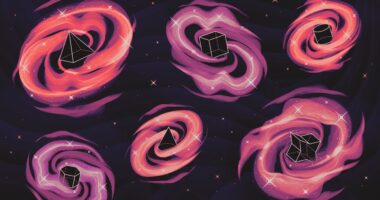NASA has revealed some stunning images taken by its Chandra X-ray Observatory space telescope.
The images offer a rare glimpse into our universe and sightings of space objects that we wouldn’t technically be able to see with the naked eye.
Human vision is limited to a certain range of wavelengths.
However, space telescopes like the Chandra X-ray Observatory can capture mind-blowing multi-wavelength views.
The wavelengths can help scientists determine the energy of a cosmic object.
A good example of this is Chandra’s recent image of one of the most famous and studied objects in the Milky Way.
Cassiopeia A is a supernova remanent that’s 11,000 light-years away from Earth.
X-ray data from Chandra combined with optical data from Hubble and more data from the Karl Jansky Very Large Array, let’s us see it in its beautiful bright glory.
Sometimes data has to be taken from several space telescopes so the full image of a space object can be compiled.
The same applies to Chandra’s recent image of R Aquarii.
That’s a celestial object made up of two stars in a ‘death dance’.
They’re located about 650 light-years from Earth.
The death dance is between a red giant star at the end of its life and a white dwarf star that’s already died.
Mira variable is the scientific name for the red giant and it’s ejecting material that’s being sucked up by the white giant.
This activity is responsible for the billowing clouds in Chandra’s recent image.
Another excellent image made from recent Chandra data shows two galaxies merging to form the Cocoon Galaxy.
It’s scientific name is NGC 4490 and it contains two supermassive black holes that humans were only able to spot using optical data from telescopes.
You can take a look at the newly release Chandra 2022 images on its website.
Find out more about science
Want to know more about the weird and wonderful world of science? From the Moon to the human body, we have you covered…
- When is the next Full Moon?
- What is a Super Moon?
- What is SpaceX?
- Where is the edge of space?
- How many bones are in the human body?
- How many chromosomes do humans have?
- What causes a volcano to erupt?
- Which sharks attack the most humans?
- What are the conspiracy theories about the world ending?
- All the UFO sightings and whether aliens are real
- Which country has the most earthquakes?
In other news, Elon Musk has revealed that updates to his Starship rocket plans will be announced at a presentation next week.
This week marks the anniversary of the first chimpanzee in space.
And, the US space agency is planning for a ‘golden asteroid’ probing mission to launch this summer.
We pay for your stories!
Do you have a story for The US Sun team?
This post first appeared on Thesun.co.uk













